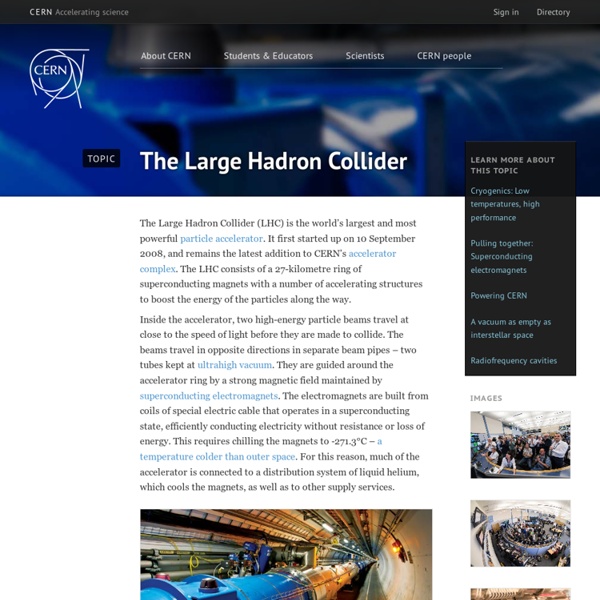Angels & Demons - The science behind the story
The term 'The God particle' was coined by the physicist Leon Lederman in his 1993 popular science book, The God Particle: If the Universe Is the Answer, What Is the Question? The particle that the book title refers to is the 'Higgs boson'. The particle we now call the Higgs boson has never been observed. First hypothesised in 1964, the Higgs boson, if discovered, would be a vital missing piece of the model that physicists use to describe elementary particles and their interactions: the Standard Model. What is the Higgs boson? The theories and discoveries of thousands of physicists over the past century have resulted in a remarkable insight into the fundamental structure of matter: everything in the Universe is found to be made from twelve basic building blocks called fundamental particles, governed by four fundamental forces.
Einstein for Everyone
Einstein for Everyone Nullarbor Press 2007revisions 2008, 2010, 2011, 2012, 2013 Copyright 2007, 2008, 2010, 2011, 2012, 2013 John D. Norton Published by Nullarbor Press, 500 Fifth Avenue, Pittsburgh, Pennsylvania 15260 with offices in Liberty Ave., Pittsburgh, Pennsylvania, 15222 All Rights Reserved
Meet Joe Incandela, Higgs boson
Physicist Joe Incandela announced the discovery of the Higgs boson on July 4, 2012. The mosaic of photos of colleagues spells "CMS," which stands for Compact Muon Solenoid. CMS is one of the experiments at the Large Hadron Collider that detected the particle.
Physics Flash Animations
We have been increasingly using Flash animations for illustrating Physics content. This page provides access to those animations which may be of general interest. The animations will appear in a separate window. The animations are sorted by category, and the file size of each animation is included in the listing. Also included is the minimum version of the Flash player that is required; the player is available free from The categories are:
Dark Energy, Dark Matter
Dark Energy, Dark Matter In the early 1990s, one thing was fairly certain about the expansion of the Universe. It might have enough energy density to stop its expansion and recollapse, it might have so little energy density that it would never stop expanding, but gravity was certain to slow the expansion as time went on. Granted, the slowing had not been observed, but, theoretically, the Universe had to slow. The Universe is full of matter and the attractive force of gravity pulls all matter together.
Physics Flash Animations
We have been increasingly using Flash animations for illustrating Physics content. This page provides access to those animations which may be of general interest. The animations will appear in a separate window. The animations are sorted by category, and the file size of each animation is included in the listing. Also included is the minimum version of the Flash player that is required; the player is available free from The categories are: In addition, I have prepared a small tutorial in using Flash to do Physics animations.
CERN Is Set To Create Unimagined Scientific Phenomena In Sept 2015 (Video)
In September, Europe’s Large Hadron Collider (LHC) which is composed of some 9,600 super magnets, which are 100,000 times more powerful than the gravitational pull of Earth, will smash together sub-atomic particles at nearly the speed of light, an unprecedented experiment that has some of the leading voices in the world of science – and religion – sounding the alarm on the risks involved. CERN is perhaps most famous for its discovery in 2012 of the elusive Higgs Boson [named after British physicist Peter Higgs who predicted its existence in 1964], the so-called ‘God particle,’ which allows other particles to build up mass as they pass through the Higgs field. Today, however, CERN is more famous – or perhaps infamous is the better word – for an upcoming experiment in which scientists will play God in an effort to recreate the conditions immediately following the ‘Big Bang’ event that gave birth to the Universe millions of years ago.
Physics To Go: Explore Physics on your own
image credit: U.S. Air Force; image source; larger image Newton's 3rd Law
Earth's magnetic field
Magnetic field that extends from the Earth’s outer and inner core to where it meets the solar wind Computer simulation of the Earth's field in a period of normal polarity between reversals.[1] The lines represent magnetic field lines, blue when the field points towards the center and yellow when away. The rotation axis of the Earth is centered and vertical. The dense clusters of lines are within the Earth's core.[2] While the North and South magnetic poles are usually located near the geographic poles, they slowly and continuously move over geological time scales, but sufficiently slowly for ordinary compasses to remain useful for navigation. However, at irregular intervals averaging several hundred thousand years, the Earth's field reverses and the North and South Magnetic Poles respectively, abruptly switch places.
Physics and Astronomy, School of
Physics and Astronomy, School of Key measures: Positive Outcomes: 95%, Graduate prospects: 81.7%, Graduate employment: 79.3% Graduate destinations: Work Full-time: 35%, Work Part-time: 8%, Work & Study: 7%, Further study: 45%, Unemployed: 5% Top industry sectors:



